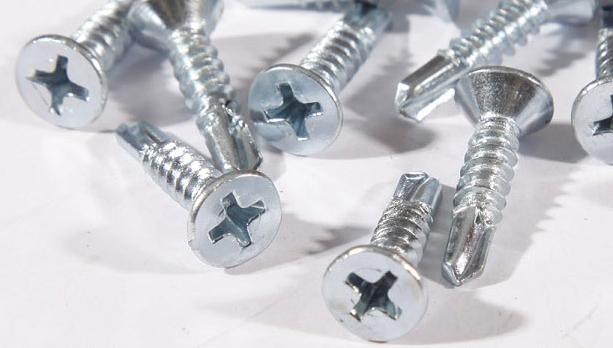Understanding the Role and Types of Construction Bolts in Building Projects
The Critical Role of Construction Bolts in Modern Infrastructure
In the construction industry, the importance of reliable materials cannot be overstated. Among these materials, construction bolts play a pivotal role in ensuring that structures remain stable, durable, and safe. Whether in the framework of skyscrapers, bridges, or residential homes, bolts are critical components that facilitate the assembly and integrity of various constructions. As we explore the significance of construction bolts, we will delve into their types, uses, manufacturing processes, and innovations that are shaping the future of construction.
Types of Construction Bolts
There is a wide variety of construction bolts designed for different applications. The most common types include
1. Hex Bolts These have a hexagonal head, allowing them to be easily tightened with a wrench. They are commonly used in metal-to-metal connections. 2. Anchor Bolts Used to attach objects or structures to concrete, anchor bolts are essential for ensuring the stability of heavy machinery and structures, such as bridges and towers. 3. Carriage Bolts Featuring a rounded head and a square portion underneath, carriage bolts are often used in wood-to-wood constructions and offer a smooth finish.
4. Lag Bolts These large fasteners are used to secure heavy timber structures, providing strong holding power and resistance to shear forces.
5. Shoulder Bolts Designed with a shoulder that creates a pivot point, these bolts are widely used in machinery for rotational applications.
Each type of bolt has unique characteristics suited for specific functions, making them integral to construction projects.
Uses of Construction Bolts
Construction bolts are utilized in a multitude of applications across various sectors
. In the infrastructure domain, they are commonly used for- Structural Connections Bolts are essential for joining different structural components, such as beams, columns, and trusses. They provide the necessary strength to keep these components securely fastened.
- Facilitating Load-Bearing Construction bolts allow buildings and structures to bear considerable loads, from the weight of the structure itself to external forces such as wind and seismic activity.
- Dismantling and Reassembly Unlike welds, which are permanent, bolts provide the flexibility to dismantle and reassemble structures, making them favorable for temporary constructions and repairs.
The Manufacturing Process
construction bolt

The manufacturing of construction bolts involves several steps, ensuring they meet the rigorous standards required for safety and performance. The process typically includes
1. Material Selection Most construction bolts are made from steel due to its strength, but they can also be made from stainless steel, brass, and other materials depending on the environment and load requirements.
2. Forging and Shaping Steel is heated and shaped using forging techniques to create the desired bolt head and shaft.
3. Heat Treatment Many bolts undergo heat treatment processes to enhance their strength and durability. This step is crucial for ensuring that they can withstand the stresses they will face in construction applications.
4. Surface Treatment To prevent corrosion, bolts are often coated with protective materials, such as zinc plating or galvanization.
5. Quality Control Rigorous testing and inspection are conducted to ensure that every batch of bolts meets industry standards for tensile strength, ductility, and resistance to fatigue.
Innovations in Construction Bolts
As engineering challenges become more complex, the development of advanced fastening solutions continues to be a critical area of focus. Innovations in construction bolts include
- High-Strength Bolts These bolts offer improved tensile strength and toughness, making them suitable for high-demand applications like bridges and high-rise buildings.
- Smart Bolts Some companies are researching bolt designs equipped with sensors that can monitor stress and strain in real time. This technology could potentially prevent structural failures by providing early warnings.
- Sustainable Materials The industry is also looking into the use of eco-friendly materials and manufacturing processes, aiming to reduce the environmental impact of construction bolts.
Conclusion
In summary, construction bolts are not merely fasteners; they are fundamental components that ensure the safety and durability of our built environment. From their diverse types and applications to the intricacies of their manufacturing processes, bolts exhibit remarkable engineering and design. As the construction industry continues to evolve, innovations in fastening technologies will undoubtedly play a critical role in enhancing the resilience and efficiency of infrastructure worldwide. Understanding the importance of construction bolts is crucial for everyone involved in construction, from engineers to builders, as these humble yet mighty fasteners hold the key to building the future.
-
Weatherproof Plastic Expansion Anchors for OutdoorNûçeJun.06,2025
-
Sustainability in the Supply Chain: Eco-Friendly TEK Screws ProductionNûçeJun.06,2025
-
Load-Bearing Capacity of External Insulation FixingsNûçeJun.06,2025
-
Double Head Bolts: Enhancing Efficiency in Industrial MachineryNûçeJun.06,2025
-
Corrosion Resistance in Chipboard Screws: Coatings for Wholesale DurabilityNûçeJun.06,2025
-
Butterfly Toggle Bolts : Enhancing Structural ResilienceNûçeJun.06,2025
